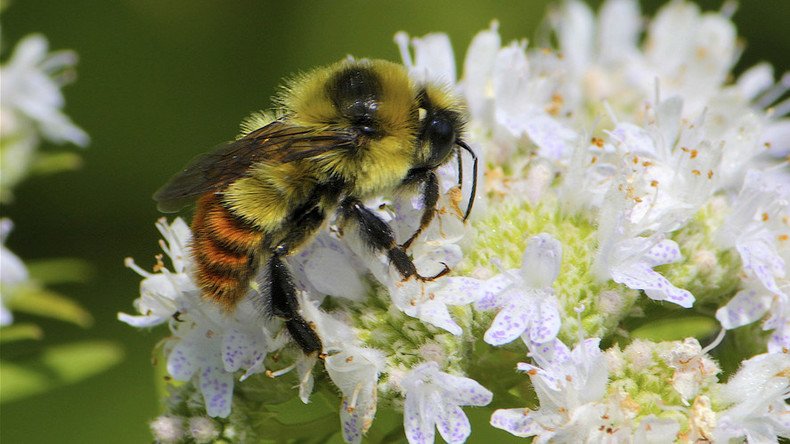Will bumble bees go the way of the dodo? Endangered status proposed

The rusty patched bumble bee could become a thing of the past. Bee die-offs have attracted attention, but the ramifications are now beginning to sting. The US Fish and Wildlife Service is proposing adding the pollinator to the endangered species list.
The Bombus affinis, known as the rusty patched bumble bee, was once a prized pollinator, but next it may be the first bumble bee in the continental US to be on the endangered species list, a real buzzkill.
In the past 20 years, the rusty patched bumble bee’s population has decreased over 90 percent due to disease, pesticide, climate change and habitat loss, Reuters reported.
Coffee buzz: Honey bees are caffeine fiends http://t.co/Cp0sibLUbupic.twitter.com/7p38xfGQSv
— RT America (@RT_America) October 17, 2015
Bumble bees are a big deal for a few reasons. For starters, agriculture is dependent on them for pollinating about a third of crops in the US which gives bumble bees an annual economic value of $3.5 billion, according to Reuters.
Additionally, they are what is known as an indicator species, which means that the health and population is a reflection of environmental conditions in their region’s ecosystem, according to the US Centers for Disease Control and Prevention.
The rusty patched bumble bee is native to the upper Midwest and Northeastern US, but that doesn’t mean they’re still there. The rusty patched bumble bee’s population has declined so severely that they may be on the brink of extinction, according to the International Union for the Conservation of Nature.
Some blame the decline in bumble bees on the use of neonicotinoid pesticides. A report from the Xerces Society for Invertebrate Conservation, a wildlife conservation nonprofit, states that these widely used pest chemicals are particularly deadly to bee populations, because they have a long-lasting presence in the soil and can remain in plants for up to six years after their application.
These pesticides are often in garden products available to the public with no warning about the dangers they pose to pollinators.
But with this wild bee population on the brink of disappearing forever, the US Fish and Wildlife Service proposed protections for the rusty patched bumble bee will grant them safeguards given to all species protected under the Endangered Species Act.
"Endangered Species Act safeguards are now the only way the bumble bee would have a fighting chance for survival," Sarina Jepsen of the Xerces Society told Reuters.












